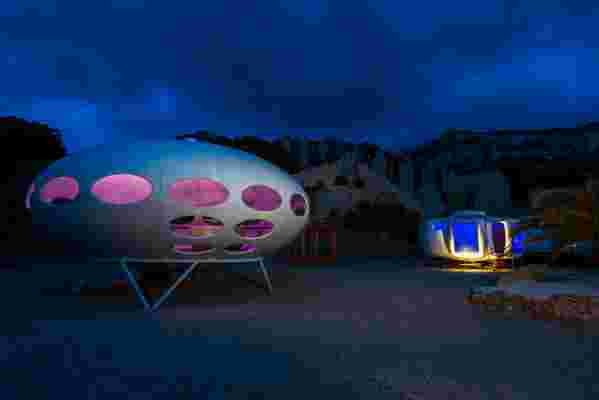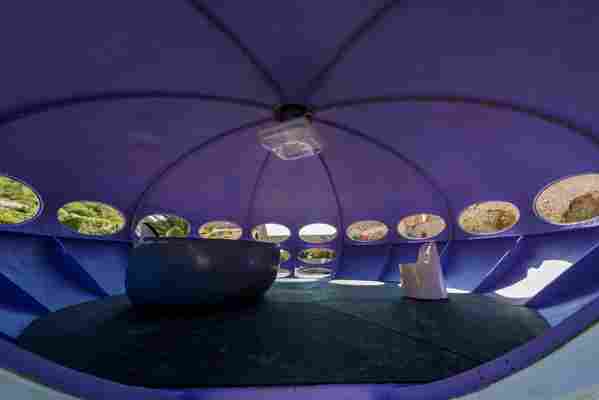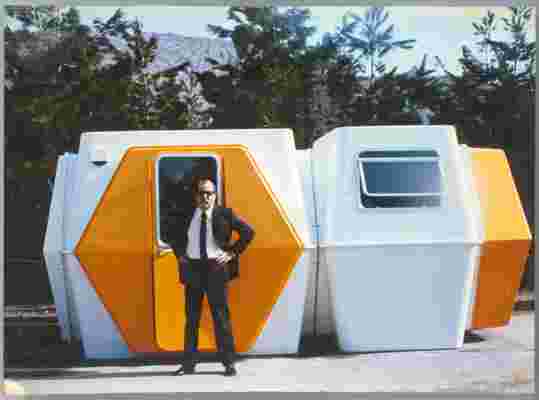Through the 1960s and early ‘70s—long before “tiny houses” became an architectural category—a generation of architects became preoccupied with making, well, tiny houses. The inspiration came from an unlikely source: plastic. Recall the now famous line from the 1967 Mike Nichols film The Graduate : “There’s a great future in plastics. Think about it.” Until 1973, when the oil crisis squelched the plastic industry, such was the sentiment in architecture, too, and architects explored the possibilities of the new lightweight material easily molded into any shape. ( Plastic, we now know, changed the history of design. )
Friche de l’Escalette, a private sculpture park in Marseille, France , is putting some of these plastic experiments on view this summer. For its season-long exhibition, “Utopie Plastic,” the open-air gallery has set these brightly colored organic shapes against its desert landscape—to otherworldly effect.

The Futuro House, pictured at night.

The interior of the Futuro House.
Take the Futuro House, for example. Designed by Finnish architect Matti Suuronen, the flattened sphere ringed with tinted windows rests on a steel base, lifting it off the ground. A stairway folds into the house, connecting ground and interiors—and reinforcing its science-fictional likeness.
Also included in the group show are two versions of Jean-Benjamin Maneval’s “Bulle”—one, the only known version complete with its original interior fit-out, and the other, an empty shell the gallery restored.

An archival image of the Hexacube (1972), designed by Georges Candilis and Anja Blomstedt.
An archival image of the Bulle (foreground) by French designer Jean-Benjamin Maneval alongside the legendary Futuro House by Matti Suuronen.
Other projects speak to the era’s aspirations for leisure and mobility. The Hexacube, for example, was meant as a mobile beach house. Designed by Georges Candilis, a former member of Le Corbusier’s studio, the Hexacube was but one part of a larger seaside holiday encampment.
The show also includes a range of plastic furniture from a range of designers, including the Boomerang Desk from Maurice Calka, the Baby Molar Chair by Wendell Castle, and the Tomato divan by Eero Aarnio.
Visitors to the exhibition socialize among the structures.
Friche de l’Escalette is a satellite project of the Paris-based Galerie 54 , a design and architecture gallery housed in a villa designed by Robert Mallet-Stevens . This is the second summer that Friche de l’Escalette is open, following its inaugural exhibition last summer, which featured works by Jean Prouvé . Next summer, the curators will return to Prouvé, putting his “Maison Tropicale,” from Niamey, on view.
